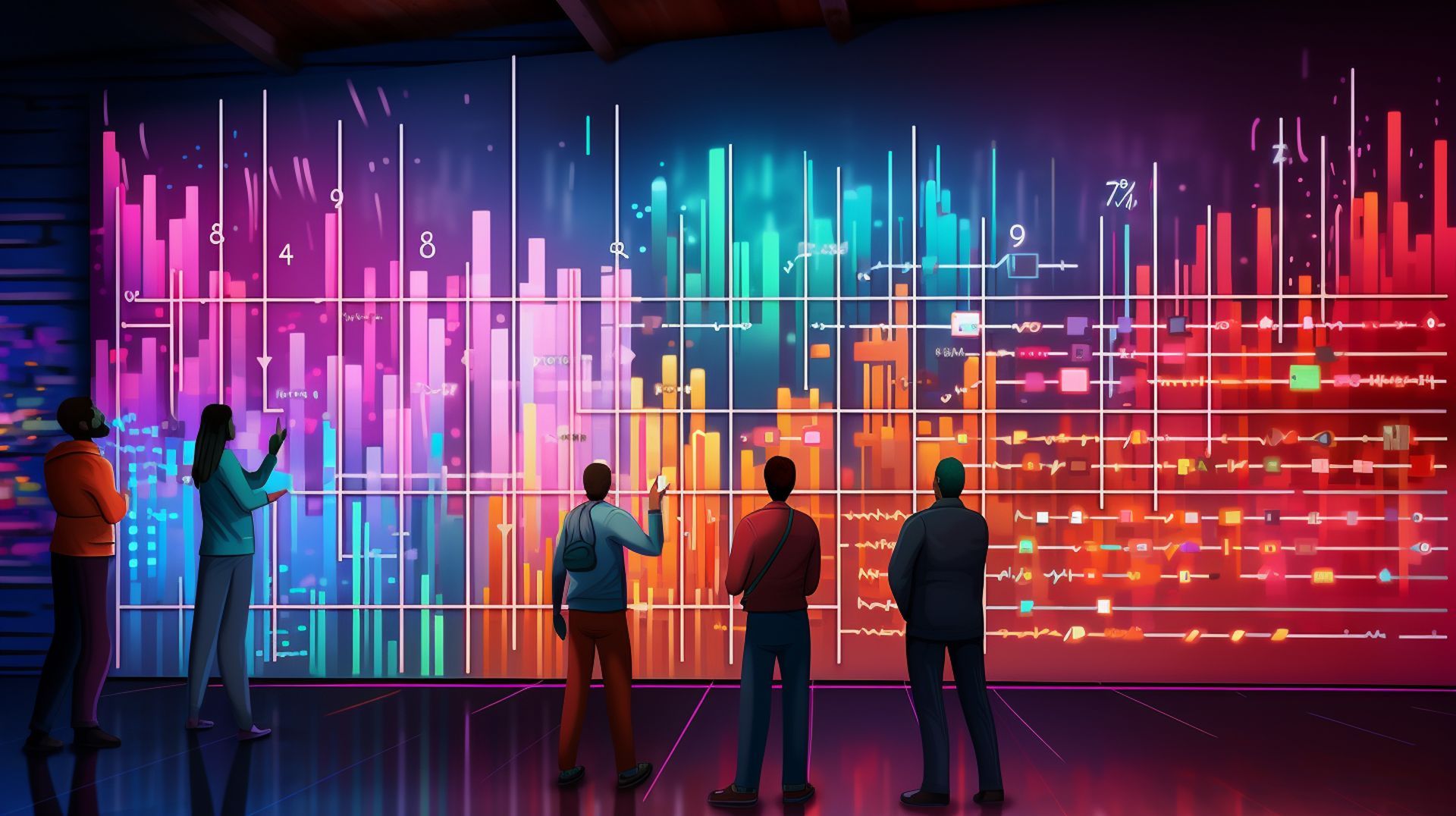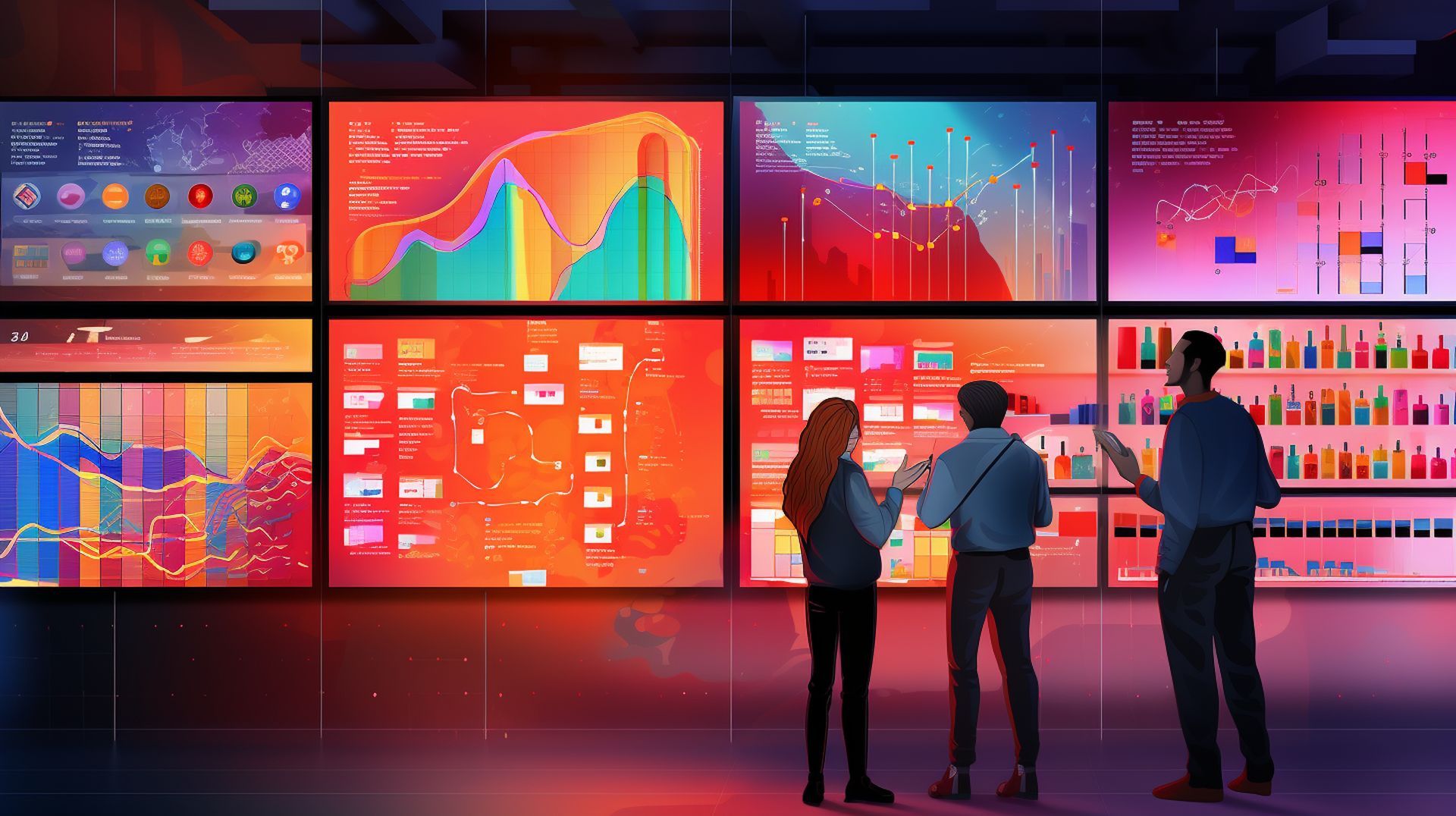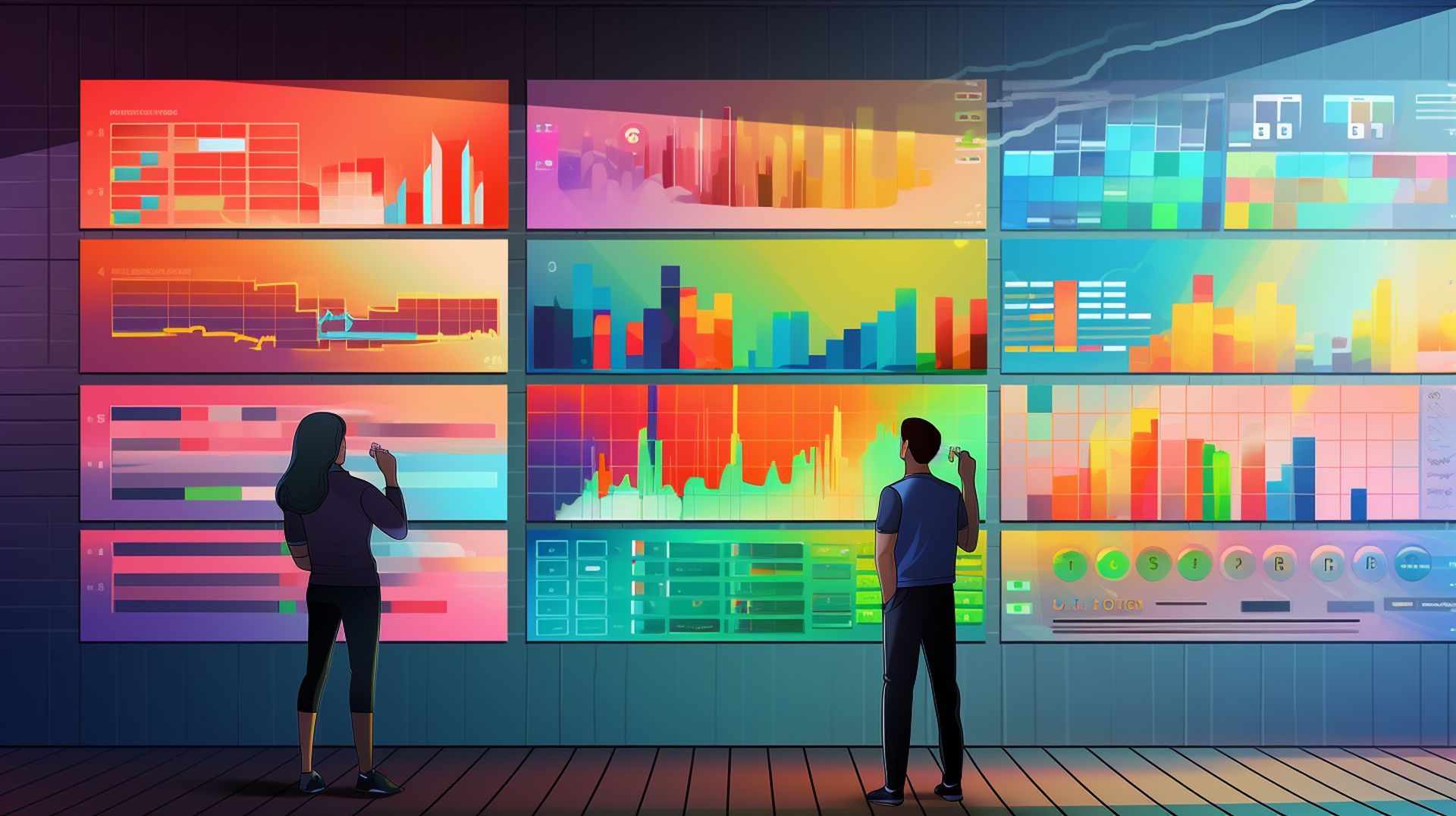This article aims to demystify the concept of data storytelling, explaining why it’s more than just charts and graphs because understanding data is essential, but making it relatable and actionable is often a greater challenge.
What is a data storytelling?
Unpacking the term data storytelling reveals it as an art form that marries quantitative information with narrative context to engage audiences in a compelling way. It’s more than mere numbers and charts; it encompasses a rich blend of data analysis, domain knowledge, and effective communication.

Understanding data storytelling and visualization
While data visualizations serve as valuable aids in the storytelling process, they shouldn’t be mistaken for the story itself. These visual aids enhance the narrative but are not a substitute for the analytical depth and context that complete a data story. Data storytelling synthesizes visual elements with sector-specific insights and expert communication to offer a holistic understanding of the subject at hand.
Consider the example of tracking sales fluctuations for a particular product. While data visualizations can clearly show upward or downward trends, a well-crafted data story would dig deeper. It might illuminate how a recent marketing blitz boosted sales, or how supply chain issues have acted as a bottleneck, restricting product availability. This broader narrative turns a mere data point into actionable intelligence, answering not just the ‘what’ but also the ‘why’ and ‘how,’ making it invaluable for decision-making.
How does data storytelling work?
Data storytelling is a trifecta of key components: raw data, visual representations, and the overarching narrative:
- Data: Let’s say your analysis reveals that a specific type of renewable energy source, such as solar power, is most efficiently generated in coastal areas. Another finding could be that peak production coincides with the tourism season.
- Visualizations: After collecting the data, visual tools step into the spotlight. These could be heat maps showing solar power hotspots or seasonal trend lines that plot energy production against tourist numbers. These visualizations act as a bridge between complex data and audience understanding.
- Narrative: The narrative is the soul of your data story. This is where you introduce the issue at hand—for example, the importance of locating renewable energy sources efficiently—and then lay out your data-supported findings. The narrative should climax in a specific call to action, perhaps urging local governments to consider these factors in their renewable energy planning.
Each of these elements is a vital chapter in the larger book that is your data story, working in harmony to create a resonant, impactful message for your audience.

How to do data storytelling?
Creating a compelling data story goes beyond merely throwing some charts and graphs into a presentation. It’s a calculated process that requires a synthesis of raw data, analytical insight, and narrative flair. So, how does one embark on this journey to create a narrative that’s not only engaging but also informative and actionable?
Data storytelling techniques step by step
Data storytelling is not a skill developed overnight. Like any other form of storytelling, it involves multiple components and steps that contribute to the final masterpiece. Here is a more granular look at some steps to create a compelling data story:
Step 1: Know your audience inside out
First and foremost, you need to be intimately familiar with your target audience. Why? Because effective data storytelling isn’t one-size-fits-all. What are the pain points or challenges that your audience faces? Why would your findings resonate with them? By addressing these questions, you can pinpoint the aspects of your data that will truly captivate your listeners or readers.
Step 2: Weave an intriguing narrative
The narrative is the backbone of your data storytelling venture. You’re not just spewing out numbers, but building a plot that guides your audience to a well-defined outcome. So, how to go about this?
Kick off by establishing the backdrop: Explain why you decided to dive into this specific data set and what pressing issue or curiosity you aimed to resolve.
Transition to your discoveries: What did your deep dive reveal? Highlight the key insights that have the most direct impact on the problem or question you began with. It’s about sifting through your data haystack to reveal the ‘golden needles.’
Close with action steps: Armed with these revelations, what should your audience do next? Offer clear, data-backed recommendations that lead to measurable results.

Step 3: Fine-tune your data visualizations
Chances are, you’ve already developed some form of data visuals during your analysis. Now’s the time to refine them. Do they successfully spotlight the most critical data points? If yes, focus on arranging them in a sequence that enhances your narrative flow. If not, go back to the drawing board and conjure new visuals that can do your ‘golden needles’ justice.
By following these steps, you not only make your data understandable but also imbue it with meaning and actionable insights, making your data storytelling endeavors not just digestible, but also indispensable.
Step 4: Lay out a familiar story arc
To make your data story resonate, consider employing a storytelling structure that your audience is already comfortable with. This includes an introduction to set the stage, a build-up that incrementally raises the stakes or complexities, a climax that delivers the pivotal data insight, followed by a resolution that ties up loose ends. Utilizing a well-known narrative framework helps your audience navigate through the data points effortlessly, and fully grasp the significance and implications of what the data reveals.

Step 5: Take your story public
Once you’ve hammered out a compelling narrative backed by solid data and visuals, it’s time to get it out into the world. A presentation deck is often the go-to medium for sharing your data story. It allows you to encapsulate each aspect of your narrative, from initial context to final conclusions, in a way that’s both visually appealing and easily digestible.
Step 6: Refine for precision and clarity
The last step in data storytelling is often the most overlooked: editing for conciseness and lucidity. Your data story needs to be both captivating and straightforward. This means cutting away any extraneous information or decorative language that doesn’t serve the central narrative. Blaise Pascal once said, “If I had more time, I would have written a shorter letter.” This sentiment rings true for data stories as well; refining your narrative to its most essential elements will ensure your audience remains engaged and walks away with the key takeaways.
Why is data storytelling important?
The significance of data storytelling lies in its ability to contextualize and simplify complex data, making it accessible and understandable to a wide-ranging audience. Unlike dry statistics or raw data, storytelling weaves these elements into a narrative that not only illustrates what the data is, but also why it matters. This creates a deeper emotional connection and engagement, driving home the implications of the data in a more impactful way.
Data storytelling accommodates various learning preferences, from auditory to visual to kinesthetic, enhancing its reach and effectiveness. Whether through a narrated presentation for those who learn best through listening, or through charts and graphs for visual learners, a well-crafted data story can adapt its medium to best engage its audience.
By employing a mix of these elements, data storytelling ensures that its message resonates across a diverse set of listeners or viewers, making the data not just informative, but also persuasive and memorable.

5 data storytelling examples you should check out
Let us explore a curated selection of some of the best data storytelling examples.
Chris Williams: Fry Universe
The perpetual debate surrounding the optimum type of fried potato is humorously explored here. The project uses visuals to demonstrate how different ratios of fried-to-unfried surface areas significantly influence the gastronomic experience.
Periscopic: US Gun Deaths
The focus of this visualization is the “stolen years” attributable to fatalities from firearms. It excels in evoking an emotional response, masterfully unfolding the data in stages to engage the viewer deeply.
Krisztina Szucs: Animated Sport Results
Rather than traditional narratives, these are effervescent, animated data vignettes that depict the dynamics of various sports competitions. Szucs employs a variety of visualization styles to match different scoring methods, all while capturing the essence and excitement of each event better than any conventional box score could.
Kayla Brewer: Cicadas, A Data Story
This data story offers an educational adventure about the appearance of Cicada ‘Brood X,’ colloquially described as “small fly bois bring big noise.” The project showcases how a public dataset can become a compelling data exploration using the Juicebox platform.
Jonathan Harris: We Feel Fine
This early pioneer in data storytelling is an interactive platform that scans the web at 10-minute intervals to collect expressions of human feelings from blogs. It then presents the data in several visually striking formats. It has been a source of inspiration for many in the data visualization field.
Databases are the unsung heroes of AI
Why it matters
Data storytelling is far from a nice-to-have skill; it’s a necessity in today’s data-driven world. It’s about making complex data easy to understand, relevant, and actionable. As we’ve shown, the impact of a well-crafted data story extends beyond mere understanding—it influences decisions. The examples provided underscore the wide range of applications and the potential to make your data not just understandable but also impactful.






